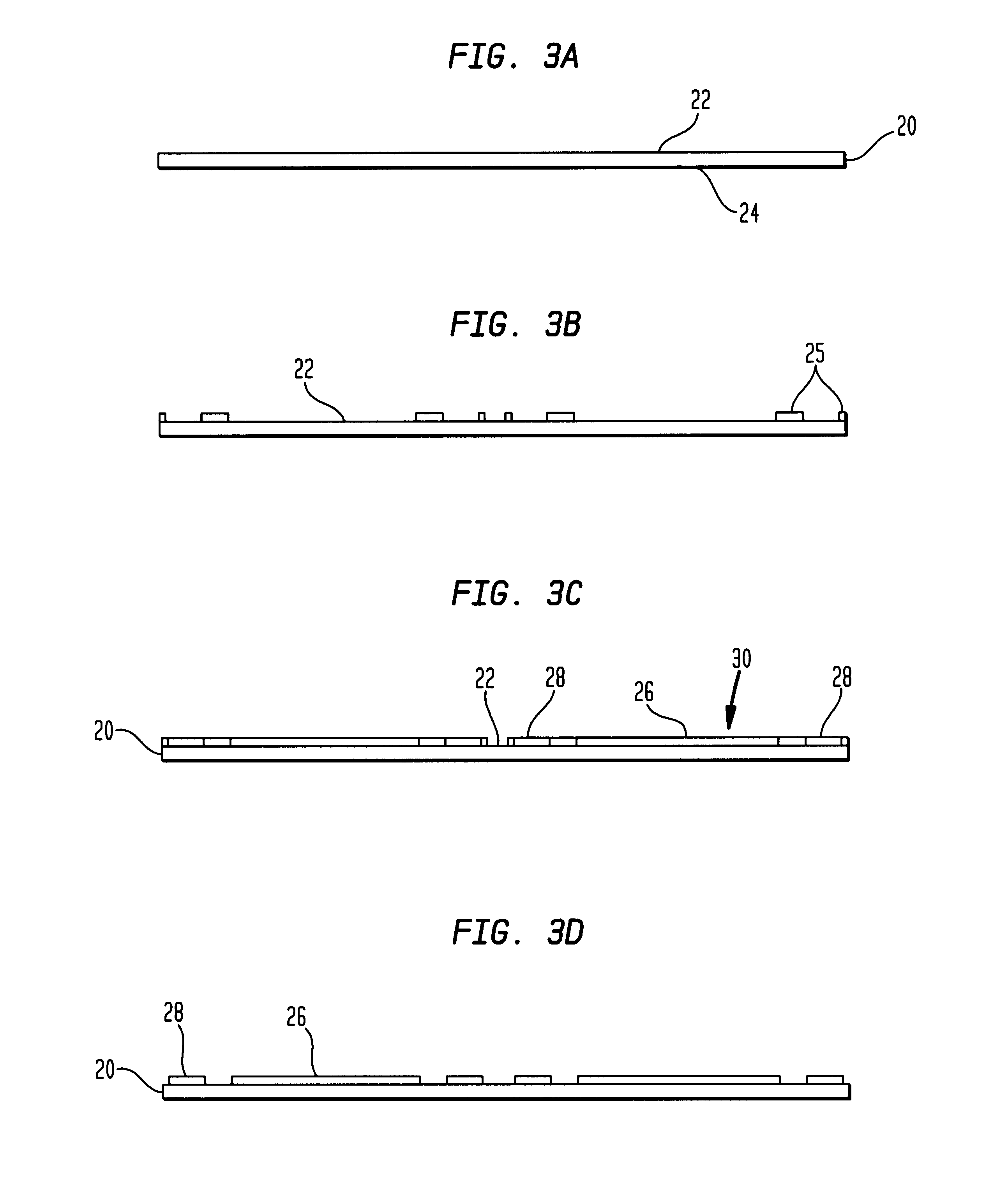Semiconductor packages having light-sensitive chips
a technology of semiconductors and chips, applied in the direction of semiconductor devices, semiconductor/solid-state device details, electrical apparatus, etc., can solve the problems of large area consumed by the chip package manufactured in accordance with the prior art methods described above, large area consumed by the chip package, etc., and achieves a small footprint, different levels of transparency or translucency, and easy flexing and moving
- Summary
- Abstract
- Description
- Claims
- Application Information
AI Technical Summary
Benefits of technology
Problems solved by technology
Method used
Image
Examples
Embodiment Construction
FIGS. 3A through 3I show a method for making a package having a semiconductor chip such as a light sensitive chip, according to one preferred embodiment of the present invention. The method described is somewhat similar to the process disclosed in U.S. patent application Ser. No. 08 / 634,464, filed on Apr. 18, 1996, the disclosure of which is hereby incorporated by reference herein. As shown in FIG. 3A, a sacrificial layer 20 is provided having a first surface 22 and a second surface 24. The sacrificial layer 20 may include a conductive metallic material, a polymer material or a combination of both. Specific examples of preferred sacrificial layer materials include aluminum, copper, steel, iron, bronze, brass, polyimide, polyetherimide, flouropolymer and alloys and combinations thereof. In the particular embodiment shown in FIG. 3A, the sacrificial layer 20 includes a sheet of aluminum having an approximate substantially uniform thickness of about 100-200 microns; although, the sacri...
PUM
 Login to View More
Login to View More Abstract
Description
Claims
Application Information
 Login to View More
Login to View More - R&D
- Intellectual Property
- Life Sciences
- Materials
- Tech Scout
- Unparalleled Data Quality
- Higher Quality Content
- 60% Fewer Hallucinations
Browse by: Latest US Patents, China's latest patents, Technical Efficacy Thesaurus, Application Domain, Technology Topic, Popular Technical Reports.
© 2025 PatSnap. All rights reserved.Legal|Privacy policy|Modern Slavery Act Transparency Statement|Sitemap|About US| Contact US: help@patsnap.com



